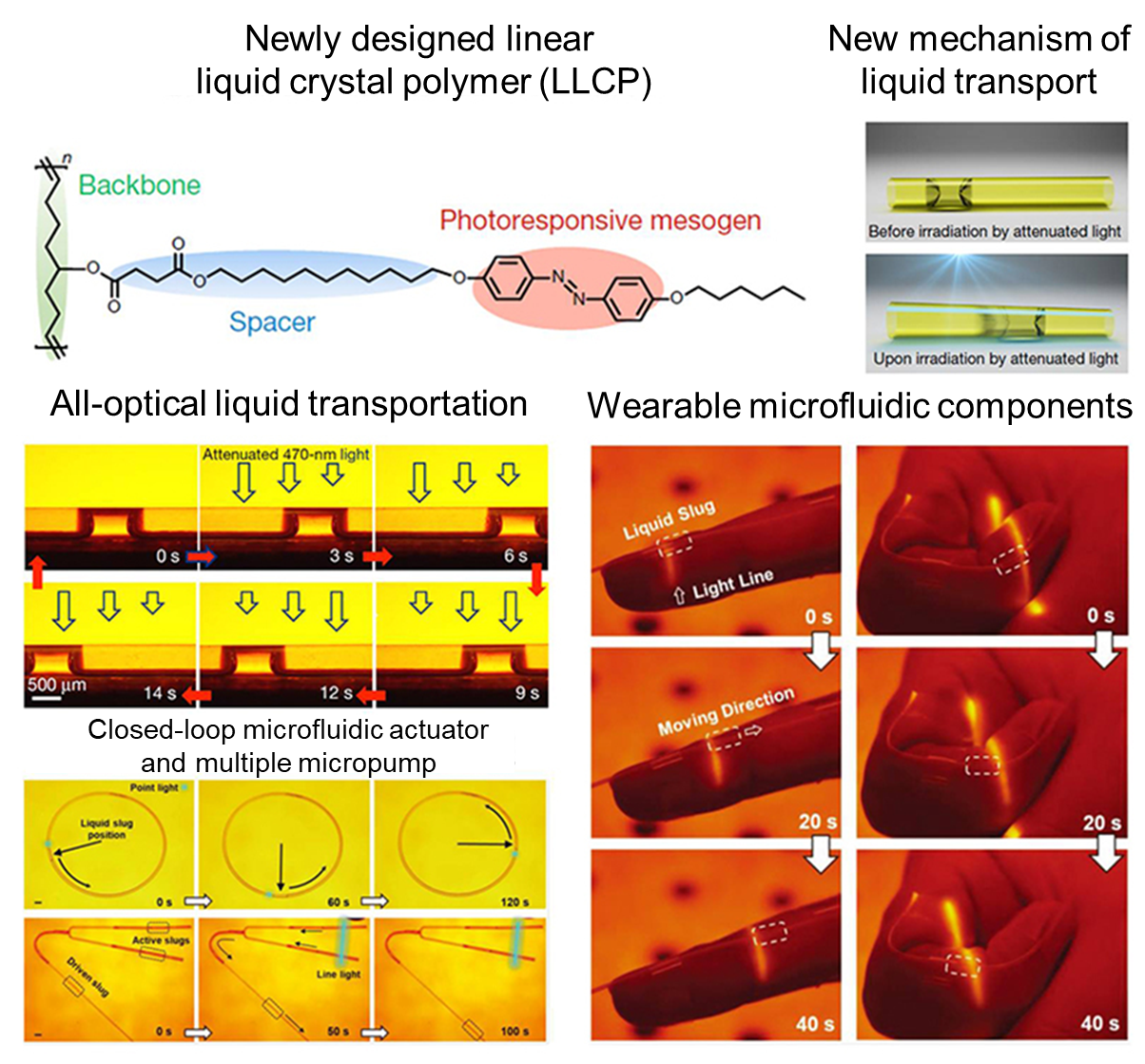Search
Light-controlled Microfluidics and Its Application
Microfluidic chip analysis is a miniaturized reaction detection technology that functions with chip as the microfluidic operating platform based on biochemical analysis through the micro-channel networks, which is the structural feature of microfluidic chip analysis. The ever-changing demands for biochemical analysis have brought about an increasing number of functional areas integrated in chips; moreover, external devices with different unit structures for fluid control are becoming increasingly complex. Therefore, the development of microfluidic portable devices for instant inspection is a challenge. We fabricate a smart micro-channel network by replacing conventional chip materials with photodeformable liquid crystal polymers to offer a new possibility for the development of novel optofluidic chips. The micro-channel network is designed with functional areas like light-controlled pumps, valves, mixers, separators, etc. based on our original new mechanism of light-controlled micro-liquid motion (light-induced Laplace differential pressure driven). Additionally, multi-control functional integration (transport, storage, mixing, and separation, etc.) is established on optofluidic chips to substantially get rid of external devices. Multi-unit automatic linkage control systems are developed for fully light-controlled chemical reaction, nucleic acid amplification, protein analysis, etc. in chips. Hence, the technology boasts a wide range of application prospects in environmental monitoring, clinical diagnosis, and other fields. Related research results have been published on journals like Nature, Small, etc., and are financially supported by the Major Program of National Natural Science Foundation of China.








